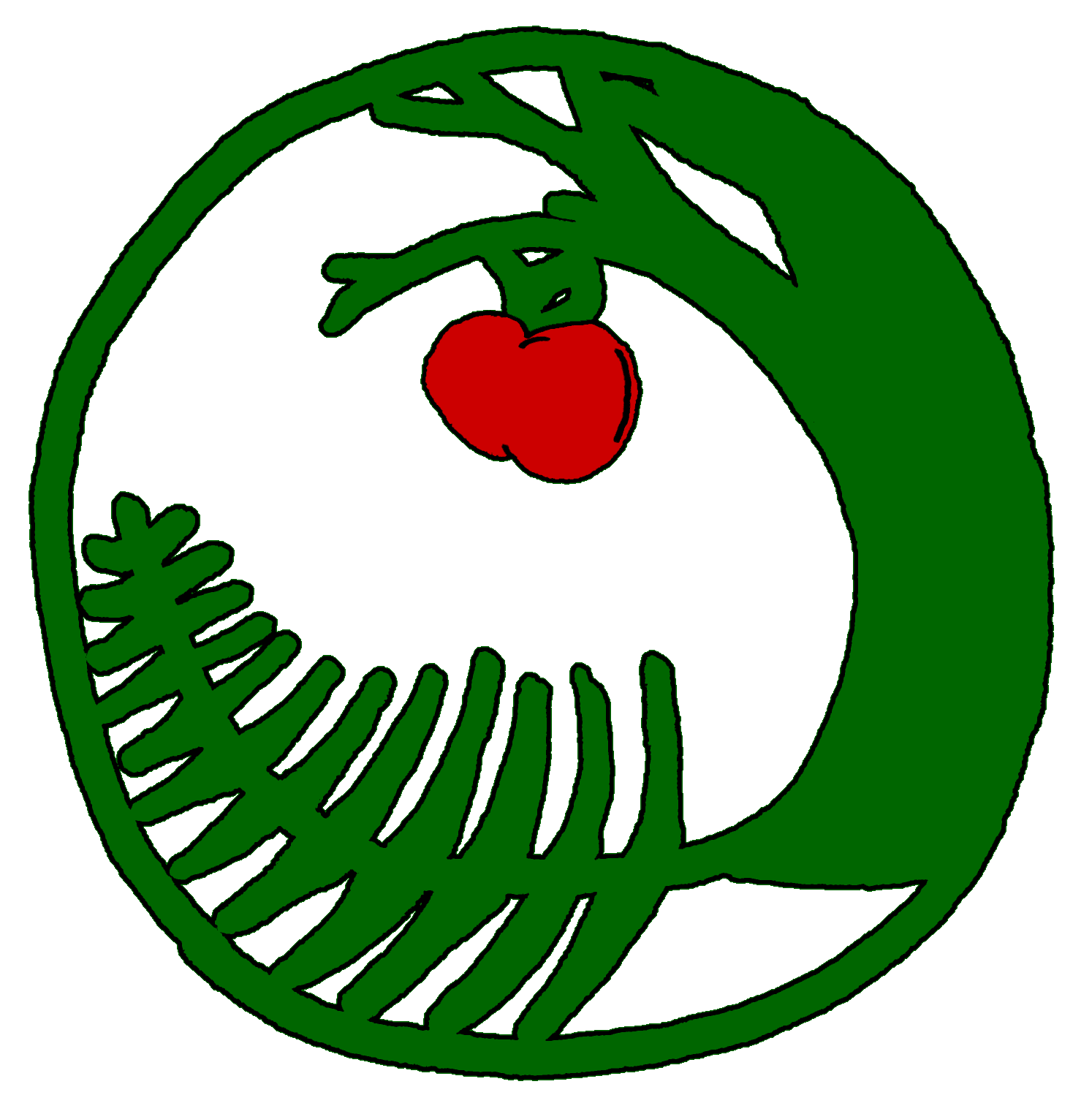This species of hardy kiwi stands out from the crowd because it produces coppery red colored kiwi fruit! It can be pollinated by Meader or any of the male Actinidia arguta. more->
Fern Hill Nursery and Botanical Sanctuary
Edible, medicinal, and native plants for the Pacific Northwest
We spent 13 years building an abundant fruit forest, annual veggie beds, perennial medicinal herbs, and a healthy mixed hardwood-coniferous forest and now we've sold our property to the next stewards so that we can begin a new homesteading project in Vermont closer to our best friends and their kids.
Don't worry - we plan to keep this website up and running so that our customers can reference what we've written about our plants!
We'll let you know once we re-start a farm in Vermont!
Hardy perennial
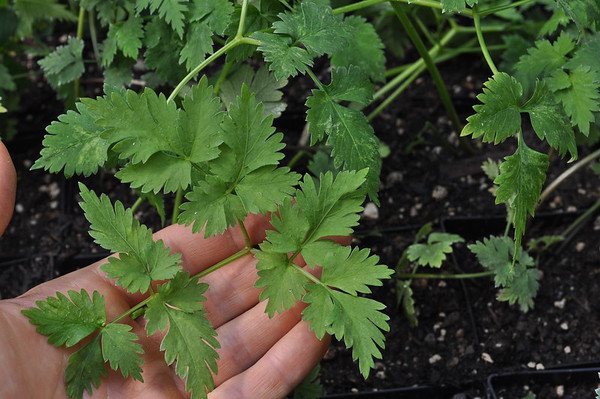
Dong quai is a traditional Chinese medicinal herb that is well known for its ability to help strengthen the heart, lung, and liver meridians. The flavor and aroma is bitter, sweet, and warming... more->
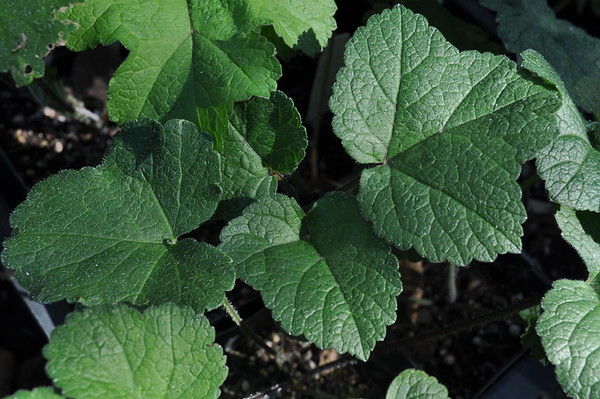
Also known as du huo in Traditional Chinese Medicine, and shishiudo in Japanese medicine, this angelica species is native to just the eastern part of Asia in those two countries... more->
Also known as Bai Zhi in Traditional Chinese Medicine, this angelica species is native to northeastern Asia in Russia, China, Korea, Japan, and Taiwan. This is the first year we've grown... more->
So we like all beebalms, but this one really tops the charts with its sweet and spicy rose scented pink flowers and foliage. The aroma makes a really blissful and warming tea. It contains... more->
This pink-flowered variety was developed in Canada to have superb mildew resistance, which can turn the tops of other varieties white and sickly in extra wet weather. more->
With darker violet-purple flowers than most wild beebalm, this variety is a crowd-pleaser and tastes good too! more->
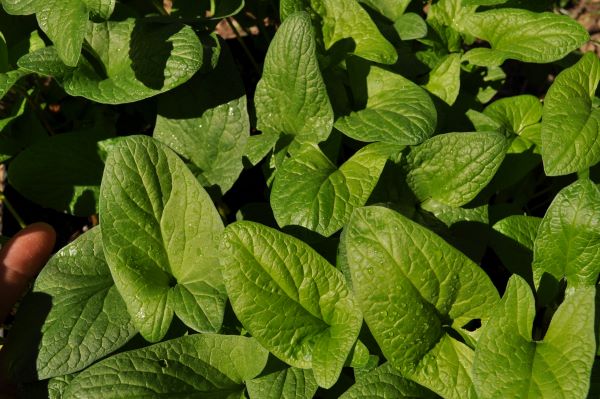
Good King Henry is a perennial vegetable closely related to spinach that produces delicious green shoots in early spring and succulent leaves in late spring and summer. In a partly shady location... more->

Ostrich fern makes the best edible spring fiddleheads of any fern around. I like to brush off the papery scales, add salt, and steam them lightly to bring out the asparagus-like flavor. Though... more->
Orange scented fragrant thyme has a compact growth form with small leaves more similar to French thyme and German winter thyme than any of the other varieties. What sets it apart is the scent -... more->
Douglas mugwort is my favorite of the species of Artemisia that we grow. It is native to sunny streambanks and partly shady riparian areas of several western states from Oregon to Mexico... more->
Poke is native to the sunny plains of the eastern United States. The hardy taproot sends up a flowering stalk up to 6 feet tall that bears small flowers and dark red-purple berries. It is quite... more->
Barbed skullcap is native to southeast Asia including China and Taiwan, often growing on the edges of rice paddies. The fresh plant is used as a vulnerary to help heal wounds and as an anti-... more->
Spotted bee balm blossoms have white, purple, and pink flowers with exquisite dippled spots. This species grows in drier and sandier soil than most bee balms. more->
'Munstead' is an English lavender that is well-known for its heat tolerance and compact form. The tall spikes of deep purple fragrant blossoms are more densely flowered than 'Vera'. more->
This species of Echinacea is native to the central plains of North America, from Texas and New Mexico, all the way north into central Canada. It is the most cold hardy Echinacea and has a longer... more->
Soft rush is a great native wetland plant to have around a pond or swale. Its round, straight stems form a graceful fountain shape, while its rhizomes decrease soil erosion. The roots and stems... more->

This dark purple-green oregano is native to Tajikistan and Uzbekistan, and stands out as a very unique variety of culinary oregano. Compared to Greek or Italian oregano, the flavor is more mild... more->
This beautiful perennial is not only fragrant but also hardy and drought tolerant. The silvery foliage grows about a foot tall with huge spikes of neon orange and red flowers another foot above... more->
Soaproot is native to sunny meadows and oak woodlands of northern California and southwestern Oregon. Like other plants in the agave family, it grows strap-shaped leaves in a basal rosette, then... more->
Skirret is an old word for sugar-root. The white roots are very sweet and have a bit of carrot flavor, which is no surprise because skirret is in the same family. The roots are perennial, but... more->
Henderson's checkermallow is commonly found along the Washington coast, but a few populations grow further south here along the Oregon coast. In the hollyhock family, this perennial grows up to... more->
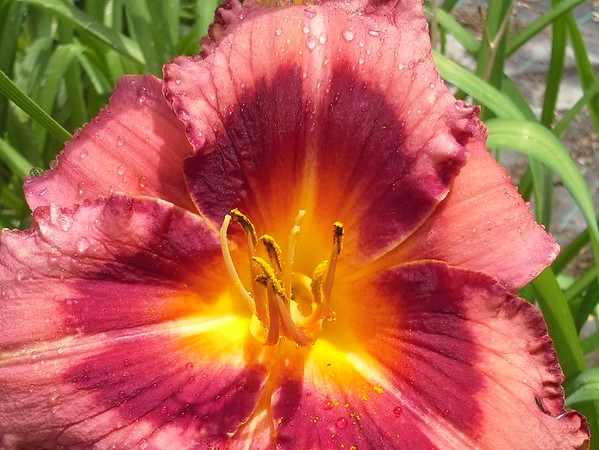
This multicolored red variety of daylily really stands out against a green backdrop! more->
We have both Scandinavian and Russian cultivars of this alpine astringent and tonic herb. Accustomed to sunny, well-drained, high-elevation rocky meadows, we've been able to grow this plant in... more->
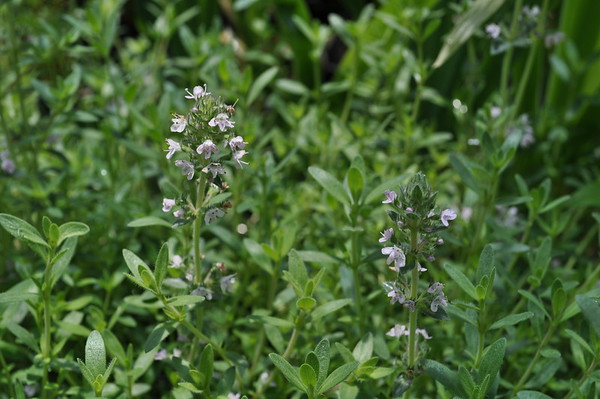
Combining the warm, spicy scent of thyme with the sweet aroma of old-fashioned rose, we can't seem to grow enough of this wonderful herb! The foliage and flowers make tea that not only tastes... more->
A very vigorous perennial native to much of North America, Canada goldenrod can quickly colonize sunny, moist meadows and gardens. It's bright and canary yellow inflorescences grow upwards from... more->
This species of skullcap is native to moist meadows over a wide area in North America. It is the most popular and common skullcap among herbalists in the U.S.
The tea or tincture of the... more->

It sure is hard to beat the savory flavor of garlic chives! While most garden chives bear pink flowers in summer, garlic chives produce a more open cluster of white blooms. The bulbs and leaves... more->
We depend on the spicy and bright salad greens from this perennial arugula in early spring when most other salad greens are still struggling with cold and wet weather. Plus, when the majority of... more->
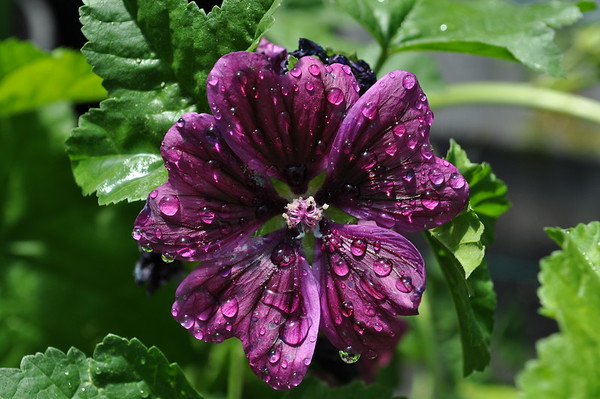
Although annual mallows can make nice greens, this perennial mallow not only has delicious leaves but it also makes large displays of showy purple edible flowers! One type has lavender petals... more->
This oregano variety has spicy flavor, slightly fuzzy leaves, and a upright, spreading habit. While our compact and golden oreganos have very mild flavor, this Italian variety will perk up any... more->
Although some refer to it as St. John’s Wort, Susan Weed conjures up the bravery of Joan of Arc in reference to the healing properties of this herb. It is listed as a noxious weed in many western... more->
If I were stranded with only one plant to choose for my garden, broad-leaved plantain would be my top choice. The whole plant is completely edible, raw and cooked. I've used it to help heal... more->
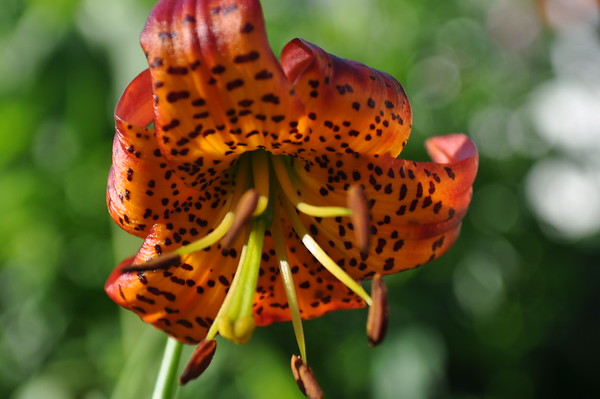
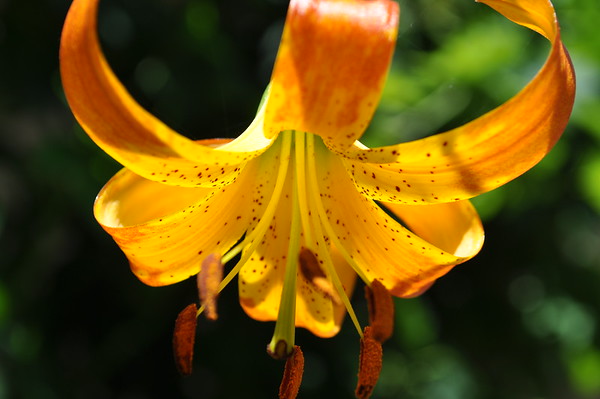
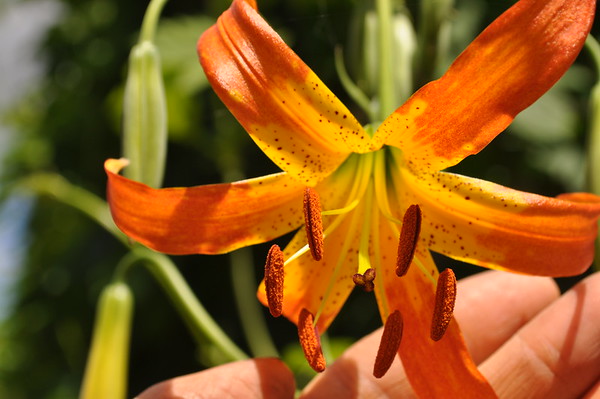
Our leopard lily mother bore seeds that were fertilized by lemon lily pollen, and this is the first generation of the hybrid. Some of the hybrid flowers turned out yellow orange with long... more->
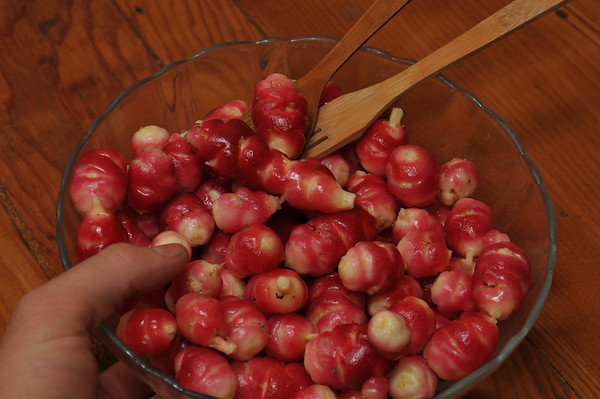
This traditional Andean perennial vegetable produces red and white tubers the size of cherries. We harvest the tubers in fall after the first frosts make them sweeter. Steamed, baked, or fried,... more->
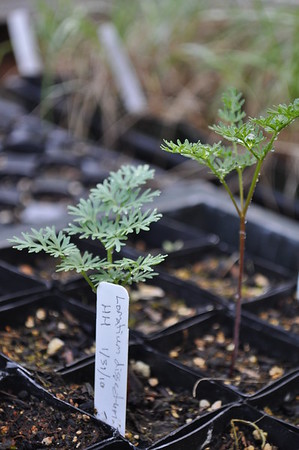
Native to well-drained hillsides in the Willamette Valley and the greater Pacific Northwest, this handsome perennial is the subject of an explosion of research for use as an antibacterial and... more->
This variety of red raspberry bears medium sized, juicy fruit. This variety was developed especially for resistence to phytopthora rot and other fungal diseases that proliferate in wet soil, so... more->
This raspberry bears sweet and beautiful golden fruit! Need we say more? more->

This succulent perennial with pale yellow umbellate flowers is native to rocky coastal cliffs in western Europe. The edible leaves and flowers have a slightly spicy taste, and hold up well when... more->
This soft, citrus-scented, and uncommon member of the borage family produces small yellow flowers in summer. Researchers have been investigating the anti-bacterial properties, while herbalists... more->
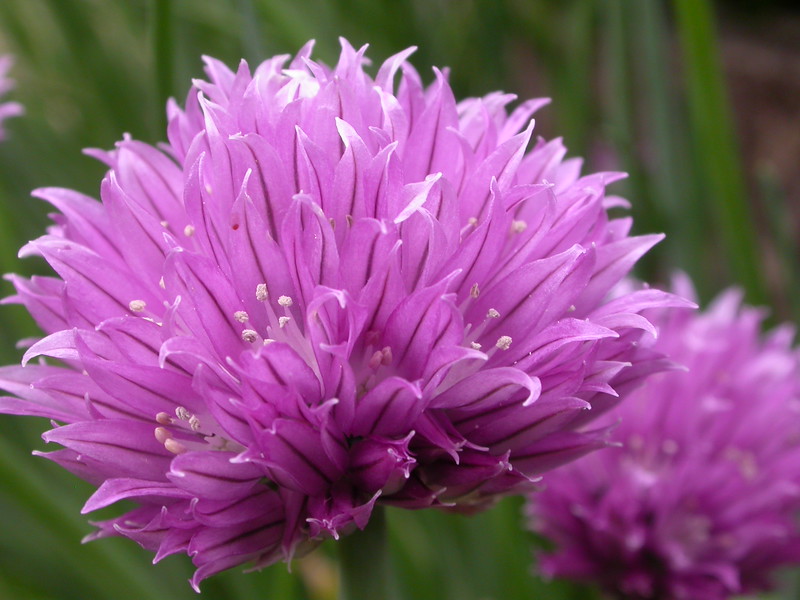
No kitchen garden can be without this flavorful and perennial member of the onion family! The 'Purly' variety makes longer and straighter hollow leaves than most. It produces edible magenta... more->
Yacón produces sweet, juicy tubers the size and shape of sweet potatoes. The stems grow up to 6 or 8 feet tall and bear yellow sunflower-type flowers. The stems and leaves are sensitive to frost... more->

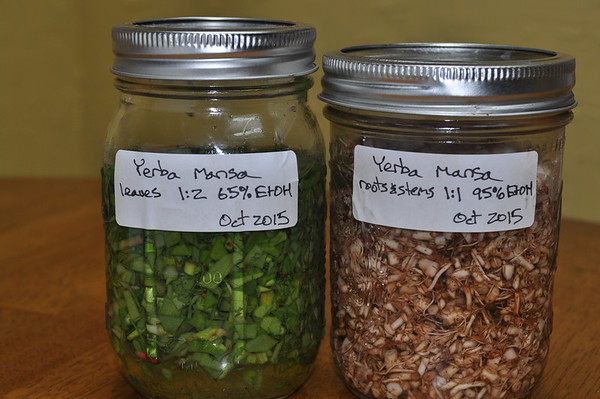
Yerba mansa is a creeping herbaceous perennial with white flowers that prefers wet soil and warm sun. Native to California and the Southwest, in our climate it may do best grown in a... more->
Bred in Canada, 'Tulameen' has very large red fruit, even bigger than the large-fruited commercial variety 'Meeker'. Unlike 'Cascade Red', it prefers well-drained soil.
Raspberry canes... more->

This perennial has slimy roots and leaves that are used externally for bruises, sprains, and dry, irritated skin. Russian comfrey has deep roots to draw nutrients to the surface, and makes great... more->
'Seascape' is a good choice if you want to harvest strawberries throughout summer and early fall. The best choice is to grow some of this variety adn some of 'June', and then you will haev... more->
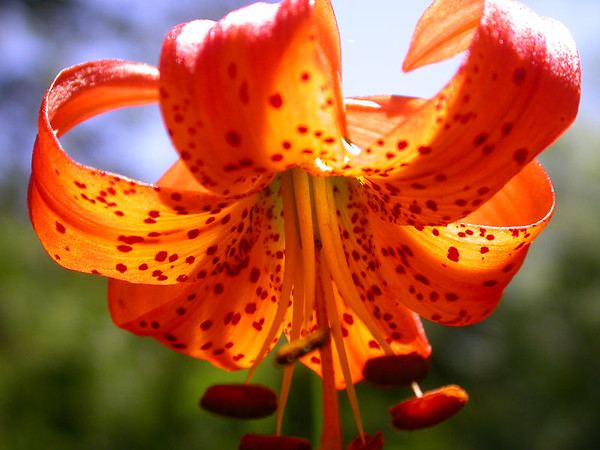
Leopard lily is a stunning wildflower native to parts of Oregon and California. It is an herbaceous perennial growing up to 6 feet tall with multiple stalks of multiple bright red and orange... more->
You may be familiar with the strong flavor of this traditional perennial vegetable. The root, grated and made into a condiment to help with digetion, it is often served with meat. We like to... more->

Red sage, also known as Dan Shen, is a perennial sage with whorls of purple flowers in late summer. This species is popular in Chinese, Japanese, and European herbal traditions for circulation... more->
